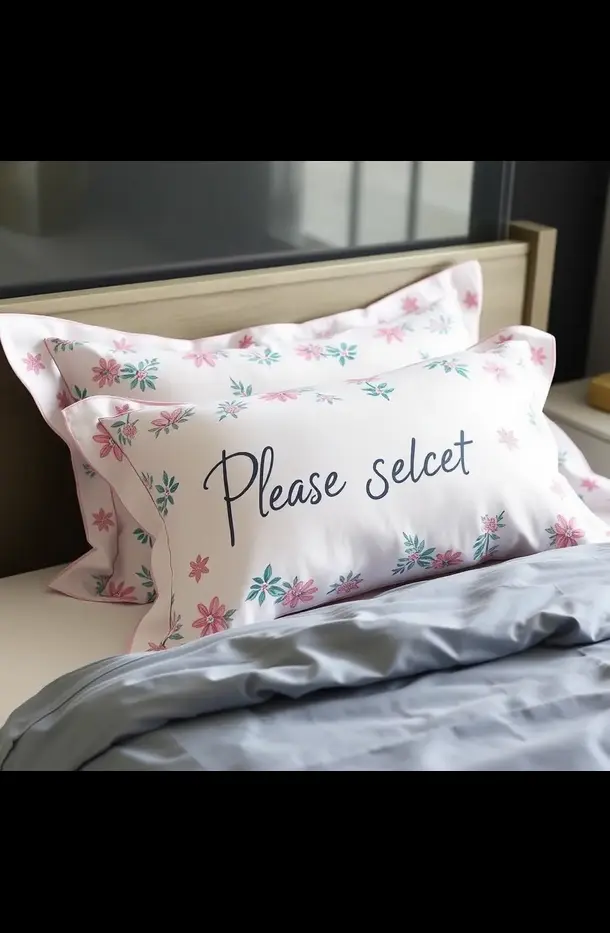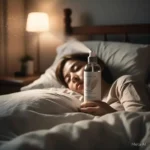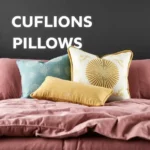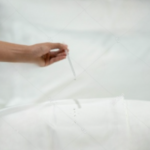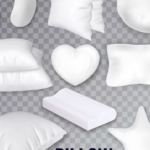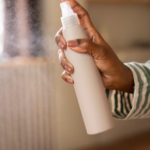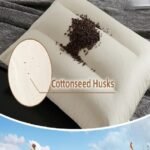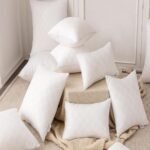Choosing the right pillowcase is essential for a good night’s sleep and overall comfort. This choice of pillowcase not only enhances your sleep experience but also contributes to the aesthetic appeal of your bedroom. With a wide variety of pillowcase types available based on design and material, it’s crucial to understand the differences to make an informed decision.
A well-chosen pillowcase can provide comfort, support, and longevity to your pillows. In this guide, we’ll explore different pillowcase designs and materials, helping you select the perfect pillowcase for your needs.
What is a Pillow Case?
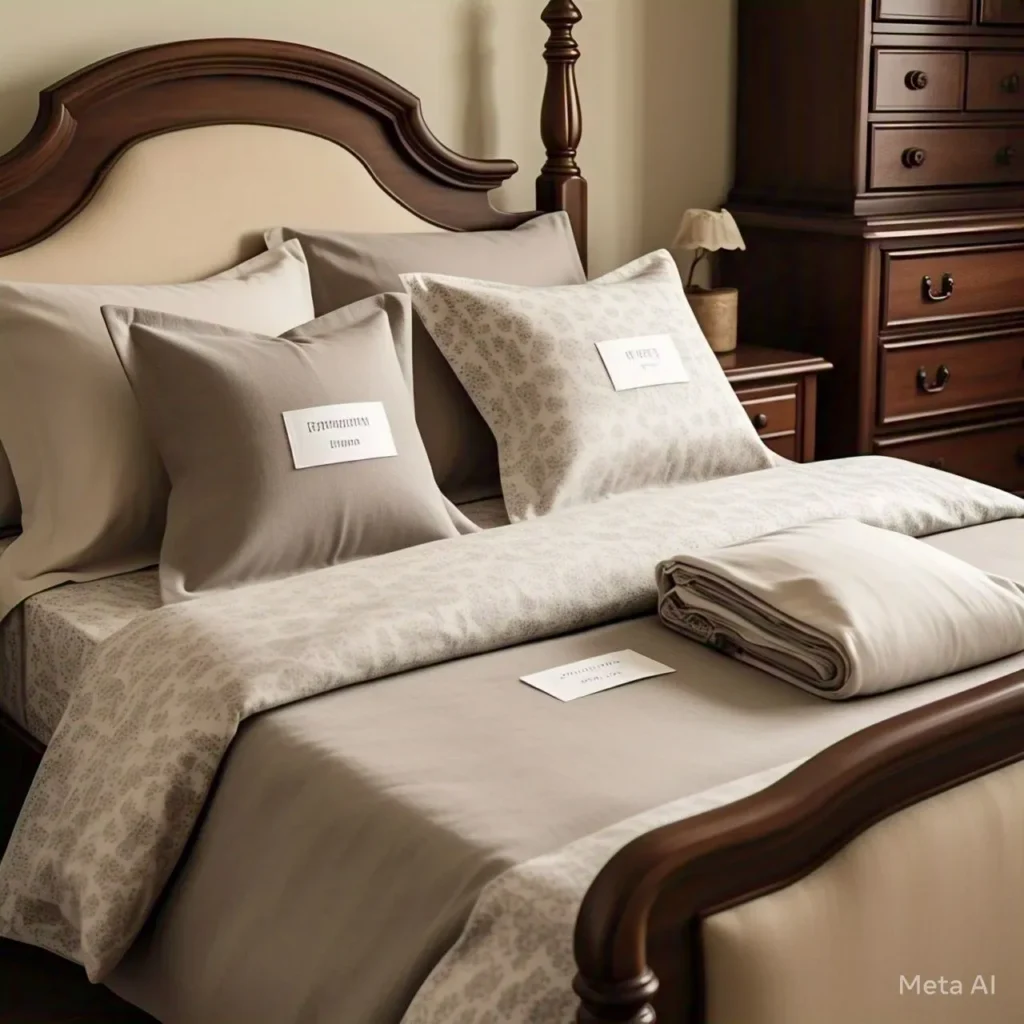
A pillowcase is a fabric covering that protects and encases a pillow. It serves multiple purposes, including maintaining hygiene by preventing sweat, oils, and dirt from reaching the pillow, enhancing the overall feel and appearance, and extending the pillow’s lifespan. Pillowcases come in various designs and materials, each offering unique benefits and characteristics.
Types of Pillow Cases by Design
Bag Pillow Cases
Description and Features: Bag pillowcases are simple and straightforward in design. They typically have an open end without any additional closures, making them easy to slip onto pillows. These pillowcases are often used in hotels due to their ease of use and quick changing.
Pros and Cons:
- Pros: Easy to use and change, suitable for quick replacements, cost-effective.
- Cons: May not provide a secure fit, pillow may slip out, less decorative appeal.
Housewife Pillow Cases
Description and Features: Housewife pillowcases are a popular choice for their practical and snug fit. They have a flap inside that tucks over the pillow, ensuring it stays in place. This design provides a neat and tidy appearance.
Pros and Cons:
- Pros: Secure fit, keeps pillow in place, neat appearance.
- Cons: Can be slightly more difficult to put on compared to bag pillowcases.
Oxford Pillow Cases
Description and Features: Oxford pillowcases are known for their decorative border or flange around the edges. This design adds an elegant touch to your bedding and can enhance the overall aesthetic of your bedroom.
Pros and Cons:
- Pros: Decorative and stylish, adds a touch of elegance, available in various materials.
- Cons: Can be more expensive, may require more maintenance to keep the flange looking neat.
Types of Pillow Cases by Material
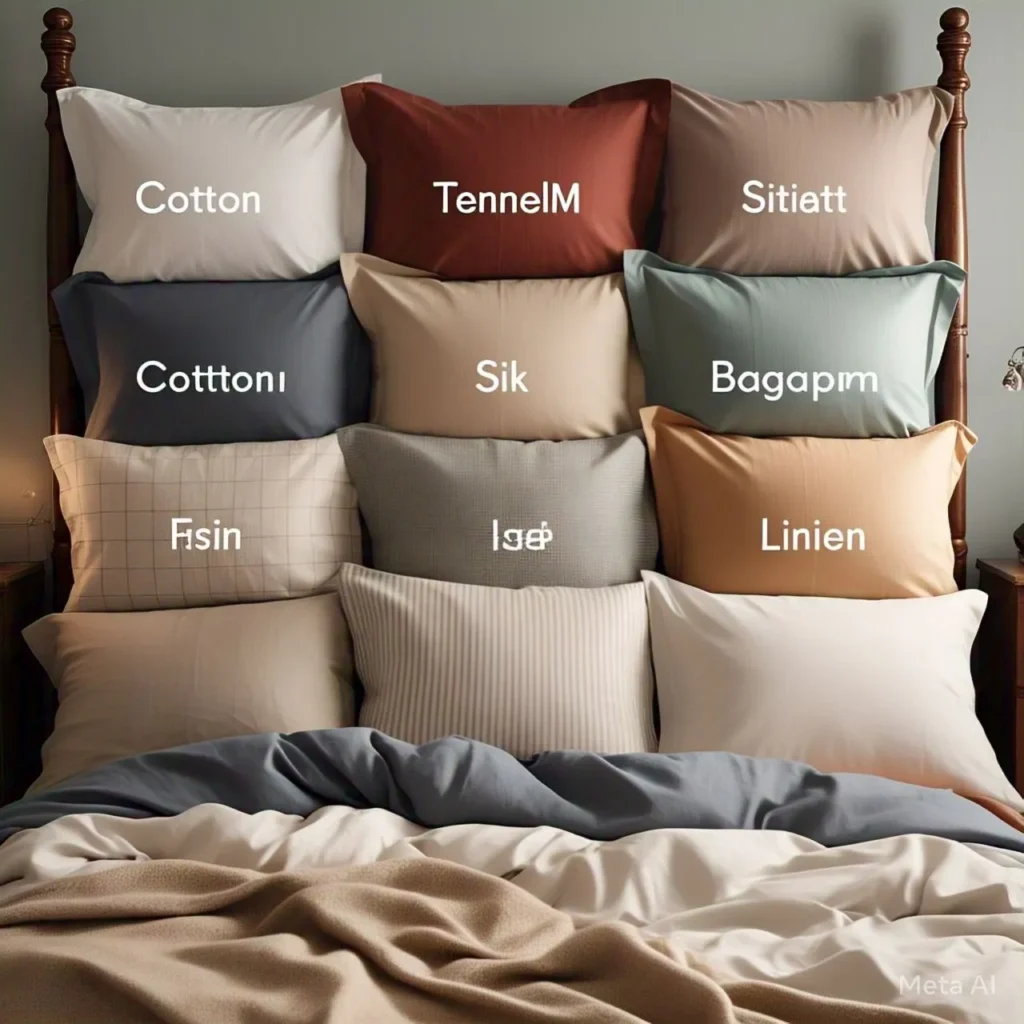
Polyester Pillow Cases
Description and Features: Polyester pillowcases are made from synthetic fibers, making them durable and wrinkle-resistant. They are often more affordable than natural fiber pillowcases and come in a variety of colors and patterns.
Pros and Cons:
- Pros: Affordable, durable, wrinkle-resistant, easy to care for.
- Cons: Less breathable, can feel less luxurious, may cause skin irritation for sensitive individuals.
Cotton Pillow Cases
Description and Features: Cotton pillowcases are a popular choice for their softness and breathability. They come in various weaves and thread counts, such as percale and sateen, providing different textures and levels of comfort.
Pros and Cons:
- Pros: Soft, breathable, hypoallergenic, available in various weaves and thread counts.
- Cons: Can wrinkle easily, may require more maintenance, can shrink if not cared for properly.
TENCEL™ Pillow Cases
Description and Features: TENCEL™ pillowcases are made from sustainably sourced wood pulp, offering a silky-smooth texture and excellent moisture-wicking properties. They are eco-friendly and ideal for those with sensitive skin.
Pros and Cons:
- Pros: Silky-smooth texture, moisture-wicking, eco-friendly, hypoallergenic.
- Cons: Can be more expensive, may require special care instructions.
Flannel Pillow Cases
Description and Features: Flannel pillowcases are made from brushed cotton, providing a warm and cozy feel. They are perfect for colder months and add a touch of comfort to your bedding.
Pros and Cons:
- Pros: Warm and cozy, ideal for colder months, soft texture.
- Cons: Can be too warm for summer, may pill over time, can shrink if not cared for properly.
Satin Pillow Cases
Description and Features: Satin pillowcases have a smooth and shiny surface, adding a touch of luxury to your bedding. They are gentle on hair and skin, reducing friction and preventing damage.
Pros and Cons:
- Pros: Luxurious feel, gentle on hair and skin, reduces friction and damage.
- Cons: Can be slippery, may require special care, can be less breathable.
Silk Pillow Cases
Description and Features: Silk pillowcases are made from natural silk fibers, offering a luxurious and smooth texture. They are hypoallergenic and gentle on hair and skin, making them a popular choice for those seeking a premium sleep experience.
Pros and Cons:
- Pros: Luxurious texture, hypoallergenic, gentle on hair and skin, regulates temperature.
- Cons: Can be expensive, requires special care, can be less durable.
Bamboo Pillow Cases
Description and Features: Bamboo pillowcases are made from bamboo fibers, which are known for their softness and breathability. They are also eco-friendly and hypoallergenic.
Pros and Cons:
- Pros: Soft and breathable, eco-friendly, hypoallergenic, moisture-wicking.
- Cons: Can be more expensive, may require special care.
Linen Pillow Cases
Description and Features: Linen pillowcases are made from flax fibers, providing a natural and breathable fabric. They are highly durable and become softer with each wash.
Pros and Cons:
- Pros: Durable, breathable, natural texture, gets softer with use.
- Cons: Can be prone to wrinkles, may feel rough initially.
Fastening Types of Pillow Cases
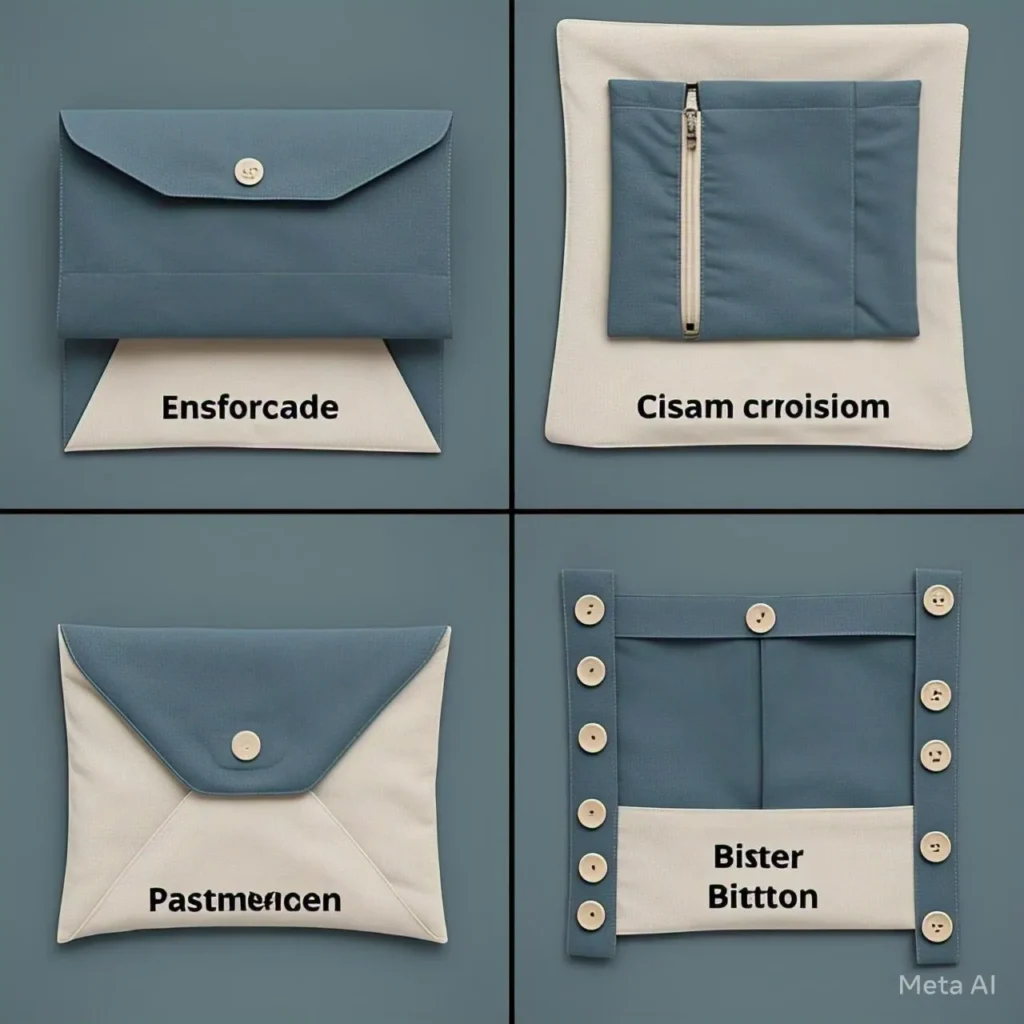
Envelope Closure
Description and Features: Envelope closure pillowcases have a flap that tucks in to keep the pillow securely in place. This design is easy to use and provides a neat appearance.
Pros and Cons:
- Pros: Secure fit, easy to use, neat appearance.
- Cons: Limited decorative options.
Zipper Closure
Description and Features: Zipper closure pillowcases have a hidden zipper that keeps the pillow securely enclosed. This design offers a sleek and modern look.
Pros and Cons:
- Pros: Secure fit, sleek appearance, easy to open and close.
- Cons: Zipper can break, may feel uncomfortable if not properly covered.
Button Closure
Description and Features: Button closure pillowcases feature buttons along the open end to keep the pillow in place. This design adds a decorative touch to the pillowcase.
Pros and Cons:
- Pros: Decorative, secure fit, adds a unique touch.
- Cons: Can be time-consuming to open and close, buttons can come off.
Pillow Case vs Pillow Sham
Differences and Uses:
Pillowcases and pillow shams serve different purposes in bedding. Pillowcases are primarily used for sleeping and are designed to protect the pillow. They come in various designs and materials to enhance comfort and aesthetics.
Pillow shams, on the other hand, are decorative coverings that often feature embellishments and closures. They are used to add a decorative touch to the bed and are usually removed before sleeping.
- Pillow Case: Functional, protective, used for sleeping.
- Pillow Sham: Decorative, adds visual appeal, often removed before sleeping.
Use Cases:
- Pillow Case: Everyday use, protecting pillows, maintaining hygiene.
- Pillow Sham: Decorative purposes, adding style to the bed, special occasions.
How to Choose a Pillow Case
Fabric of the Pillow Case
Key Considerations: When choosing the fabric of your pillowcase, consider factors such as comfort, breathability, durability, and maintenance. Different materials offer unique benefits, so it’s essential to select one that aligns with your needs and preferences.
- Comfort: Choose a fabric that feels soft and comfortable against your skin.
- Breathability: Opt for breathable materials like cotton and TENCEL™ to ensure a cool and comfortable sleep.
- Durability: Consider how long-lasting the fabric is and whether it can withstand regular washing.
- Maintenance: Select a fabric that is easy to care for and maintain.
Size of the Pillow Case
Importance of the Right Fit: Choosing the correct size of a pillowcase is crucial for both aesthetics and functionality. A well-fitted pillowcase ensures that the pillow stays in place and looks tidy. Measure your pillows accurately and choose pillowcases that match their dimensions to avoid any loose or tight fittings.
Shams and Closures
Types and Preferences: There are various types of shams and closures to consider when selecting a pillowcase. Each type offers different benefits and can affect the overall look and feel of your bedding.
- Envelope Closure: Provides a secure fit and is easy to use.
- Zipper Closure: Offers a sleek and modern look, ensuring the pillow stays in place.
- Button Closure: Adds a decorative touch but may require more effort to open and close.
Conclusion
Recap of Key Points:
In this guide, we explored the different types of pillowcases based on design and material. We covered various designs such as bag pillowcases, housewife pillowcases, and oxford pillowcases, along with materials like polyester, cotton, TENCEL™, flannel, satin, and silk.
Final Thoughts on Selecting the Perfect Pillowcase:
Selecting the perfect pillowcase involves considering factors such as fabric, size, and closures. By understanding the unique benefits and characteristics of each type, you can make an informed decision that enhances your comfort and the overall aesthetic of your bedroom. Remember to choose high-quality, durable, and comfortable pillowcases to ensure a restful and rejuvenating sleep experience.
FAQs
What are the different types of pillowcases?
There are several types of pillowcases, including bag pillowcases, housewife pillowcases, oxford pillowcases, throw pillowcases, envelope closure pillowcases, zipper closure pillowcases, and button closure pillowcases. Each type offers unique features and benefits to suit different needs and preferences.
How do I choose the right pillowcase material?
When choosing the right pillowcase material, consider factors such as comfort, breathability, durability, and maintenance. Opt for materials that feel soft against your skin, are breathable to keep you cool, durable for long-lasting use, and easy to care for.
What is the difference between a pillowcase and a pillow sham?
Pillowcases are functional covers used for sleeping and protecting pillows, while pillow shams are decorative coverings that add visual appeal to the bed. Pillow shams often feature embellishments and closures and are typically removed before sleeping.
Why is it important to choose the right size of a pillowcase?
Choosing the right size of a pillowcase ensures a snug fit, which keeps the pillow in place and maintains a neat appearance. A well-fitted pillowcase prevents the pillow from slipping out and enhances both the functionality and aesthetics of your bedding.
What are the benefits of silk pillowcases?
Silk pillowcases offer numerous benefits, including a luxurious texture, hypoallergenic properties, and gentleness on hair and skin. They help reduce friction, preventing hair breakage and skin irritation, and regulate temperature, keeping you cool in summer and warm in winter.
How often should I replace my pillowcases?
It is recommended to replace pillowcases every 1-2 years or when they show signs of wear, such as thinning fabric, stains, or loss of softness. Regular washing and proper care can extend their lifespan, but it’s essential to replace them when they no longer provide comfort and protection.
Are polyester pillowcases good for your skin?
Polyester pillowcases can be less breathable and may cause skin irritation for some individuals, especially those with sensitive skin. While they are durable and wrinkle-resistant, natural fibers like cotton or silk are often better choices for comfort and skin health.
Can I wash TENCEL™ pillowcases in the washing machine?
Yes, TENCEL™ pillowcases can be washed in the washing machine. Follow the care instructions on the label: use a gentle cycle with cold water and mild detergent, avoid bleach and fabric softeners, and opt for air drying or a low heat setting in the dryer to maintain the fabric’s quality.

